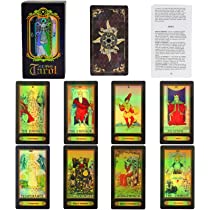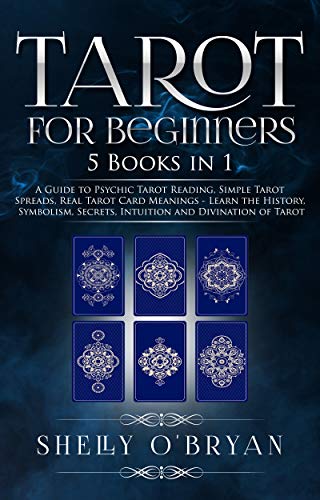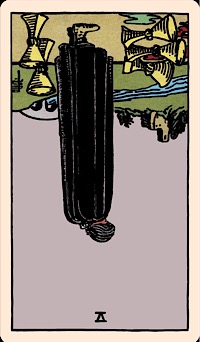
Palmistry is an ancient art that uses the hands as a map to understand your personality. This map can reveal everything, from your history to your personal potential. Through interactive illustrations and a palmistry book, you will learn how to interpret your hand's energy. The book will help you to identify the different types of hands and the meaning of the lines and markings on your fingers. You'll also learn what the rings on you hands mean.
The Complete Guide to Palmistry: Hands
The hand is an important part a person’s personality. It makes sense to be able to recognize its shapes and features. There are four basic shapes to the hands: water, air, fire, and earth. Each element reflects a person’s character. These characteristics can be seen in the lines of the hand and the creases.
LifePrints: Your Fingerprints Can Help You Decipher Your Life's Purpose
Our fingerprints make us unique. For over a century, we have used our fingerprints as a way to identify ourselves. But did you know that your fingerprints could also be used to help us find our purpose in life? Richard Unger shares a way to empower your fingerprints and find the meaning of your life.

Unique fingerprints are formed five months before our birth. Fingerprints are considered the most reliable method to identify oneself. Richard UNger presents a unique method for self-discovery and daily compass for meaning.
Cheiro, the Palmist
Cheiro, the Palmist was a prominent palmist who predicted the future down to the hour. However, despite his fame, Cheiro was a loner and resisted human bonds. His lonely life almost cost him his soul. Although he did have many admirers, Cheiro was not able to write books about his techniques and methods.
Cheiro the Palmist is one of the most influential palmists of all time. His revelations about the Line of Life are well-known. He believed that the Line of Life relates to every aspect of life. The line should be long, thin, and deep. Good health is achieved when the line is both long and deep.
Benham Book of Palmistry
The first publication of this practical guide to palmistry was in 1900. This book contains more than 800 illustrations taken from actual life as well as a wealth information about palmistry. This treatise discusses the basics of our work, plan of creation, mount types, life current, general attributes of the lines, and pose and carry of hand.

Benham explains the different hand shapes known as mounts. Each mount is a symbol of distinct virtues and flaws. In the same way, each mount corresponds to a different type of astrological sign. Jupiter is, for instance, the sign Jupiter. Saturn, on the other hand, is the sign Saturn. Venus is the sign for Venus.
Eason's palmistry book
Cassandra Eason's A Little Bit of Palmistry provides a great introduction to palm reading. It includes information about the meaning of the basic lines, how they are used, and what the lines mean for life and death. It contains 109 pages and is a great starter book for beginners.
Palmistry is an exciting method to learn. It is used to predict the past, identify opportunities and challenges, and determine compatibility. This is the funniest type of divination and also the most accurate. Some books emphasize the Active hand, which represents the main writing hand. This hand records potentials and opportunities as well as challenges.
FAQ
What are the competitive hobbies?
You can compete in running, swimming or cycling as well golfing or tennis.
They're a great way to get social interaction and are enjoyed by those who love physical activity.
You will probably find people around you who have the same hobby as you, if you are into physical activity.
You might consider joining a group or club that meets regularly to play together in sports.
Participating in group games, which involve playing alongside others, is another option.
These include football (soccer), cricket, rugby, netball, basketball, hockey, baseball, volleyball, badminton, squash, handball, and table tennis.
There are many kinds of competition.
Some competitions exist solely for recreational purposes.
Others are intended to test competitors' skill.
Some are even designed to reward outstanding performance.
In these cases, the winners receive prizes.
Other competitions are designed to test the strength and stamina of competitors.
These are endurance events.
For example, marathon races, triathlons, Ironman Triathlon, etc.
Athletes train hard before they compete in these events.
They will adhere to a strict training program that prepares them mentally as well as physically.
They may need to spend some time out of their home for preparation.
It is important to keep in mind that not all athletes can compete in every event.
What kinds of hobbies are appropriate for introverts.
Introverts are able to concentrate on one thing at once. They like solitude activities such as reading and writing, listening to music and watching movies.
They also enjoy quiet time. However, they don't like socializing all day. They often feel bored when they are surrounded by people.
Introverts may choose to do hobbies that are more alone-oriented. You might find them reading books, listening, playing music, taking photos, writing poetry or painting.
Introverts may even prefer to live alone. This allows them to focus on their hobby without being distracted by other things.
What is a hobby for kids?
A hobby for kids is any activity they like to do as part of their normal daily routine. You might find them interested in drawing, building things, painting, writing stories, playing with toys, listening to music, reading books, watching TV, and playing computer games. They may also like to play soccer, football, basketball, cricket, rugby, baseball, and hockey.
Many parents worry that their children will get into trouble if they're allowed to do whatever they want. This isn't necessarily true, though. Your child will not get into trouble if he or she is safe and doesn’t cause any harm to other people or themselves.
It is important that people remember that simply because they love doing something does not mean they will always do it. If they are passionate about drawing but hate writing, they might choose to draw pictures over writing.
There are many hobbies to choose from, so it's up you to find the one that interests you most.
What are the best ways to find a hobby?
When you first start your journey into finding a hobby, you may feel like you've got nothing to choose from.
You're probably thinking, "I'm not very artistic," or "I'm terrible at sports," or maybe even "I don't know anything."
The truth is that you likely already have a lot experience in your chosen hobby.
It's not that you don’t realize it yet.
Have a look at your home. How much stuff do you own?
Do you still have toys?
You might have a collection.
Perhaps you have always wanted to be a chef.
Or perhaps you would just like to learn how to play the guitar again.
It doesn't matter what it is, you can probably turn it into a hobby.
The key is to see that you already have many experience to draw upon.
Once you do that, you can choose a hobby to fit your life.
Statistics
- Almost 80% of people claim to have no hobby. (hobbylark.com)
- In comparison, men in the “no humor” condition were refused 84.6% of the time and were only accepted 15.4% of the time. (time.com)
- This 100% accurate personality-analyzing hobby quiz discovers your passion based on your characteristics. (quizexpo.com)
- A new survey by Pew Research Center of teens ages 13 to 17 finds that 36% of girls feel tense or nervous about their day every day; 23% of boys say the same. (pewresearch.org)
- 37% Video Games 36% Travel 36% Health and Fitness (quizexpo.com)
External Links
How To
How to Get Started in Baking
Baking is the art of making food out of flour, eggs sugar, butter and other ingredients. Baking involves the use of flour, fats sugars, leavening agent, salt, and water as the main ingredients. This article will explain how to make loaf. Common ingredients such as wheat flour, yeast and milk powder, eggs whites, butter, oil, salt, honey, and olive oil will all be used.
You need to combine these ingredients in order to bake bread. First, add the dry ingredients to your bowl (flour. yeast. salt). Then, add in the wet ingredients: milk powder, egg yolk. Mix all ingredients together. Add the honey and then knead the dough until smooth. Allow the dough to rise until doubled in size. After the dough has been rising for around 30 minutes, it should become soft and light. You can roll out the dough and place it on a baking sheet. Bake at 180°C for 15 minutes.